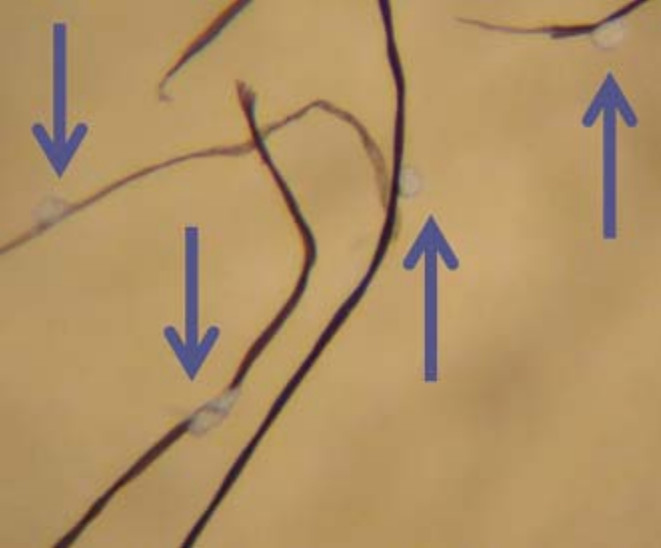
Spray paint droplets adhering to the fibers of a jacket, observed under a microscope (magnification ~75x). When spraying from a spray paint can, paint droplets from the resulting mist are likely to fall on nearby surfaces, and can be used to link clothing to paint found at an action site[1].
Trace evidence is the tiny fragments of physical evidence that can be transferred between objects, or between objects and the environment. This transfer can occur when two objects touch, or when small particles are dispersed by an action or movement. Trace evidence can be analyzed to establish links between people, objects, and places.
Examples of trace evidence include hair (including pet hair), gunshot residue, fibers from clothing, paint chips, and pieces of glass. Less common examples include soil, cosmetics, and fire debris.
See the other physical traces topic.
Used in tactics: Incrimination
Mitigations
| Name | Description |
|---|---|
| Anonymous dress | By dressing anonymously, you can prevent an adversary from linking trace evidence from your clothing (e.g., textile fibers detaching from your clothing into the environment) back to you. |
| Careful action planning | Trace evidence can link objects to an action site. To prevent this, after the action, you can plan to dispose of any tools or clothing you used during the action. |
| Stash spot or safe house | Trace evidence can link objects to an action site. To prevent this, you can store in a stash spot or safe house any tools that are too expensive to realistically discard after each action. |
Used in repressive operations
| Name | Description |
|---|---|
| Case against Jeff Luers | In the raid of the storage unit, the police found a bolt cutter matching the cuts in the fence surrounding the site of the May arson attempt[2]. |
References
Handbook of Trace Evidence Analysis (2020), chapter Paints and Polymers, p. 157–218.

